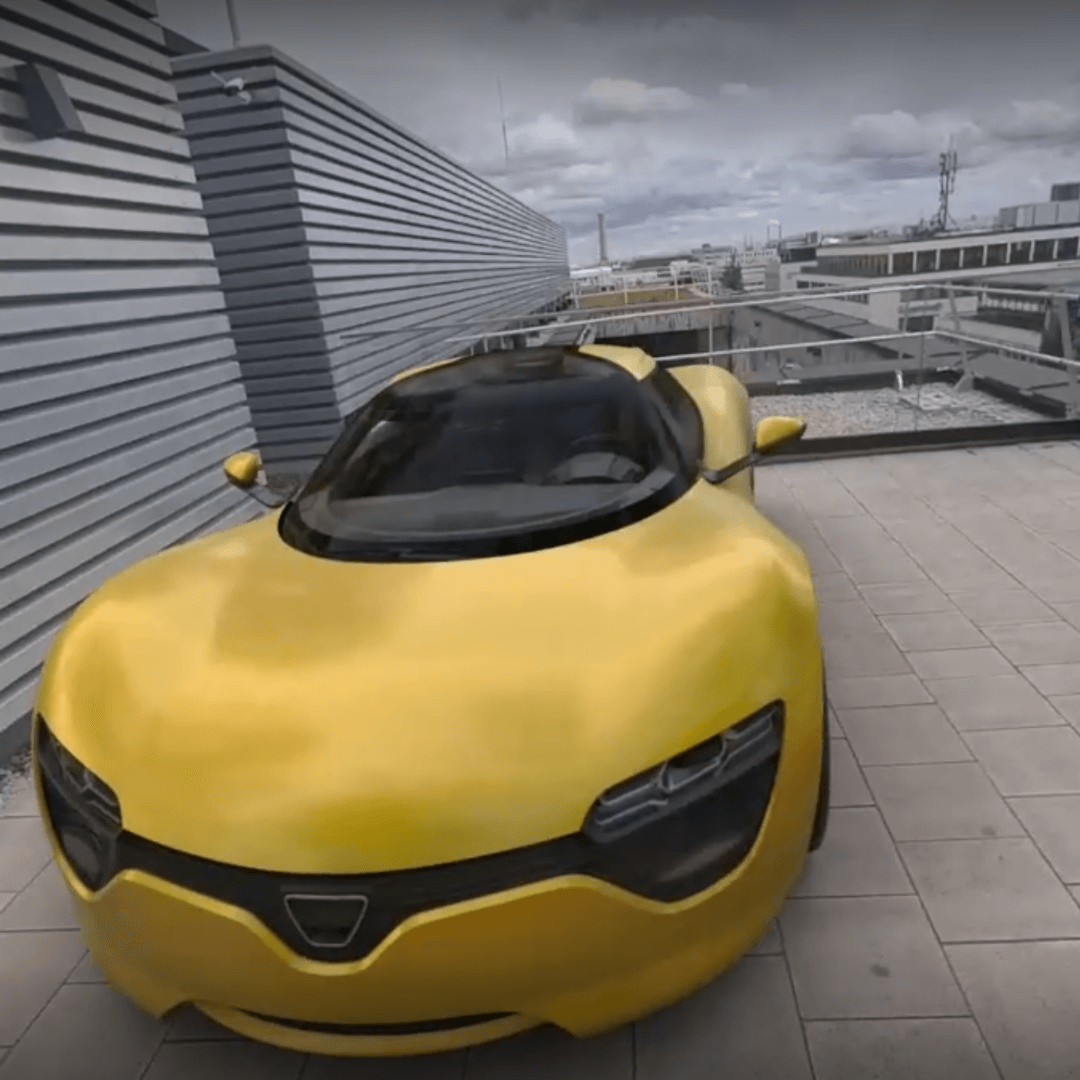
Immersive Showroom Experiences: The Future of Car Buying with spatial computing and augmented reality (AR)
This Insight explores the use of spatial computing by means of augmented reality applied to interactive car configurators, highlighting its benefits in enhancing customer experience, increasing sales, and strengthening brand loyalty.
What is spatial computing?
Spatial computing is a paradigm that involves the interaction of digital and physical worlds through the integration of spatial and contextual data. It includes technologies such as augmented reality (AR), virtual reality (VR) and mixed reality (MR), which enable users to interact with digital content in a spatially aware environment.
Importance in the automotive industry
The automotive industry is increasingly adopting digital technologies to meet evolving consumer expectations. AR as a component of spatial computing, offers unique opportunities to engage customers more deeply, providing interactive and immersive experiences that traditional digital interfaces cannot match.
Augmented reality online car configurator
An interactive car configurator allows customers to personalize and visualize their vehicle choices in real-time. Integrating AR into these configurators elevates the user experience by enabling customers to see a life-size, interactive 3D model of their customized vehicle in their own environment.
Benefits of immersive
car configurator experience
1. Best use of retail space: More cars in limited retail space
- Digital exhibition space for city car showrooms: The recent city car showroom displays a lower amount of retail space and is usually focused on one or two example vehicles.
AR eliminates the need for physical display models, allowing dealerships to display an unlimited number of car models and configurations digitally. This reduces the physical space required for car exhibitions, making room for a more engaging digital showroom.
- Cost efficiency: Reducing the number of physical cars on display lowers storage and maintenance costs while maximizing the use of available space.
This reduction in physical footprint can lead to significant cost savings in real estate and facility management.
2. Ready to “WOW” your customers: Immersive experience
- Immersive visual and interactive appeal: AR creates an immersive experience that captures customers' attention and imagination.
The ability to visualize their customized vehicle in a realistic 3D space, walk around the car, view it from different angles, with different environments and interacting with it in 3D seeing how different customization options look in real life, significantly enhances the "wow" factor.
- Interactive experience: Customers can engage with the car's features in real-time, exploring different configurations and options in a highly interactive manner, such as changing colors and rims and adjusting interior settings, leading to a more satisfying, enjoyable and memorable shopping experience.

3. Innovative Features: AI + Personalization
- Customization and personalization: AR technology allows for extensive customization options, enabling customers to tailor every aspect of their vehicle to their preferences.
- New AI features: The possibilities with AR are vast, including integrating AI for personalized recommendations, overlaying information about car features, and even simulating driving experiences in a virtual environment.
4. Increase brand experience at the showroom

- Emotional experience: Due to the high immersive character of the experience, customers can explore different realities and at the point of sales in a multisensorial environment and at a 1:1 scale ( real size of the car).
This can have a high impact on the customer choice and on the emotional experience with the car.
- Brand Differentiation: Adopting cutting-edge AR technology distinguishes a brand as innovative and customer-centric, enhancing its competitive edge in the market as well as its reputation and appeal.
5. Increased sales and conversion rates
- Informed decision-making: By offering a detailed and realistic view of the vehicle, AR helps customers make more informed decisions, reducing uncertainty and increasing confidence in their purchase. In an immersive experience the customer can see the actual personal variant of the product in actual size, rather than using samples.
- Upselling opportunities: AR can visualize the appeal of additional features and options, encouraging customers to consider higher-end configurations and accessories via the true size scale representation of the vehicle.
6. Easy to use and roll-out in the car showroom
- Plug & Play: Modern AR solutions are ready to use with minimal setup, allowing dealerships to quickly integrate AR configurators into their sales processes. Due to technology advancements, the new spatial computing technologies became more user friendly. Out of the box solutions that are ready to use and don’t need controllers nor advanced rigging systems are increasing the user experience and decrease the complexity of past VR systems.
- Intuitive interfaces: AR platforms are designed to be intuitive, requiring little to no training for customers and sales staff to use effectively.
7. Data & customer relationships
- Data-driven insights: AR configurators can collect data on customer preferences and behaviors, providing valuable insights for personalized marketing, improving customer relationships and tracking customer preferences.
- Market expansion: The flexibility of AR allows brands to reach a wider audience without the limitations of physical showrooms to display real scale digital car models. This makes it easier to expand to different markets due to its “out of the box” roll out specifications.
Technical implementation challenge
AR technology stack
Implementing an AR car configurator requires a robust technology stack that includes:
- 3D modeling and rendering: High-quality 3D models of vehicles and customizable parts.
- AR SDKs and frameworks: Tools such as ARKit (iOS), AR Core (Android), or Web-based AR solutions.
- Backend infrastructure: Efficient data management systems to handle user configurations, preferences, and interactions.
- User Interface (UI) Design: Intuitive and user-friendly interface to facilitate seamless interaction with the AR environment.
Integration with existing systems
To ensure a smooth and effective implementation, the AR car configurator must be integrated with the brand's existing digital infrastructure:
- E-commerce platforms: Synchronization with online stores for real-time pricing, availability, and purchasing options.
- Customer Relationship Management (CRM) systems: Integration to track user preferences, interactions and feedback for personalized marketing and support.
- Analytics tools: Deployment of analytics tools to monitor user behavior, engagement metrics, and configurator performance.
Future prospects
The future of AR in car configurators is promising, with advancements in spatial computing poised to offer even more sophisticated and immersive experiences. Future developments may include:
- Enhanced realism: Improved rendering technologies will enable even more lifelike and detailed visualizations.
- Expanded interactivity: Increased functionality, such as test-driving virtual vehicles in AR environments.
- Integration with AI: Artificial intelligence can provide personalized recommendations and adjustments based on user preferences and behaviors.
Conclusion
Augmented reality represents a transformative opportunity for the automotive industry, particularly in the realm of online car configurators. Due to the intuitive user interface and easy to roll-out solution, this technology has the potential to take car personalization at the car dealership to a new dimension. By providing an immersive and personalized experience, dealers can enhance customer satisfaction, drive sales and increase customer experience at the showroom.
Automotive brands that will use AR technology in the future have a high potential to redefine the usual showroom experience for the customer and make a better use of retail space.
More than this, by adopting AR in online car configurators, automotive companies can significantly improve the customer journey, from initial at home immersive exploration to final showroom purchase, establishing themselves as first moves in the digital transformation of the automotive retail experience.
Authors

Alvaro Alonso
Sales Director ParadoxCat

Vladimir Moldovanu
Creative Director rpc






